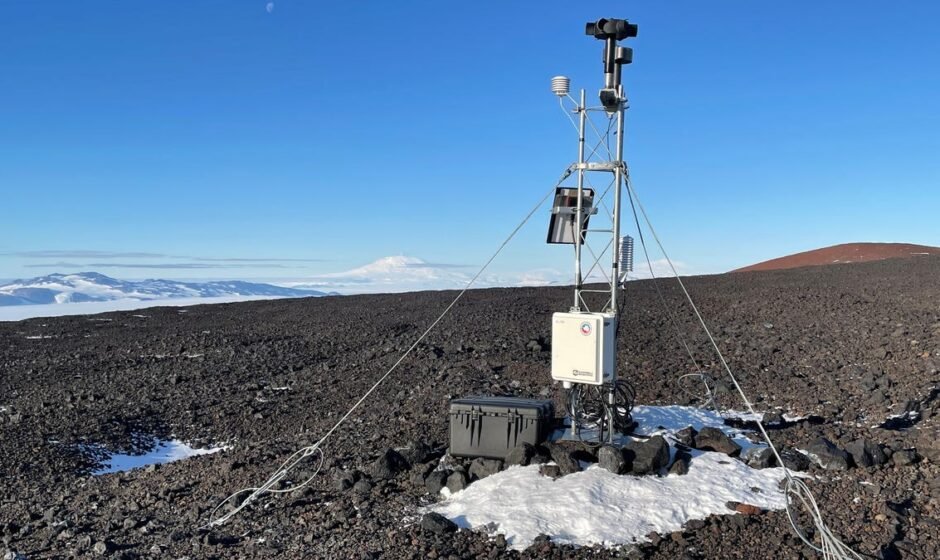A team of researchers from the University of Wisconsin-Madison and Madison Technical College are monitoring the weather in Antarctica on a daily basis. They capture data from a network of weather towers spread across the continent, keeping an eye on temperature, wind speed, and precipitation. Their research recently led to the publication of a study showing how a tropical storm near the equator affected Antarctica, resulting in warming temperatures that harmed one of the continent’s endangered ice shelves.
According to David Mikolajczyk, a researcher with the Antarctic Meteorological Research Center at UW, the team observed a chain of events in March 2022. A strong atmospheric river brought heat and moisture from the tropical regions to Antarctica, causing record warm temperatures in East Antarctica. This warming had effects on air temperature, precipitation, and the ice shelves along the coast. The Conger ice shelf collapsed during this wave of warm temperatures, with temperatures reaching 15 degrees Fahrenheit in higher elevations and 37 degrees Fahrenheit in places closer to sea level.
Mikolajczyk emphasized the interconnectedness of global weather patterns, stating that events around the equator can have ripple effects downstream weeks later. The team’s research in Antarctica, along with similar events, can help humans better understand how climate change will impact even the coldest and most remote areas of the world.
Wisconsin has been involved in studying Antarctic weather for 44 years. After Stanford University established the first weather stations in Antarctica, Dr. Charles Stearns from UW took over the project. He ran it for 27 years before passing it on to Matthew Lazzara, who has led the project since 2007. The program, which owns and maintains around half of the weather stations on the continent, relies on competitive grants from UW and Madison Technical College.
The weather stations are equipped with various monitors to measure wind, temperature, and other weather factors. They are powered by solar panels and transmit data back to Wisconsin, where researchers analyze it for trends. Students from the Technical College are also involved in designing and building the technology, ensuring accuracy and keeping the equipment up to date.
Lazzara highlighted the benefits of the partnership between UW and Madison Technical College, as it allows each institution to showcase its strengths. Additionally, the yearly trips to Antarctica provide undergraduate and graduate students with invaluable experiences, exposing them to the continent’s wildlife and deepening their understanding of weather monitoring.
Overall, the research conducted by the Wisconsin team in Antarctica contributes to our understanding of the world and the importance of studying every part of it. By piecing together the puzzle of global weather patterns, we can gain a comprehensive understanding of how changes in one region can impact others.




